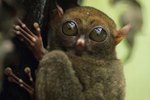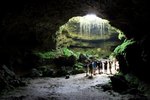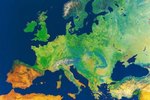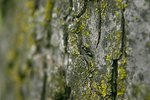
The mighty sequoia stands tall over the coastal forests of the Pacific Northwest and the slopes of the Sierra Nevada mountains in central California. An array of diverse species inhabit the sequoia forests, including bald eagles, bear, elk and mountain lions. The forest itself is not the only ecosystem in play. Each individual sequoia tree can be considered its own individual ecosystem. That trait earns the towering specimens the nickname "trees of life."
Tree of Life

Sequoia can refer to two different species of tree. One is the redwood (Sequoia sempervirens), which grows along a 450-mile belt of forests along the Pacific coast. The other is the giant sequoia (Sequoia gigantea), whose specimens are scattered throughout the western slopes of the Sierra Nevada mountains. The redwood is the tallest tree in the world, with some specimens towering more than 300 feet. While not as tall as the redwood, the giant sequoia is the largest tree by volume because of its fuller trunk size. From the trunk to the lofty upper branches, both species of sequoia provide self-contained ecosystems for scores of species from multiple kingdoms.
Insects and Arachnids
The sequoia tree is home to many types of insects including several species of ants, lacewings, wasps, moths and butterflies. Some notable species in particular include the fall webworm moth, Lorquin's admiral butterfly, the acorn ant, the cuckoo wasp and the jumping plant louse. A number of arachnid species inhabit the sequoia tree. Many types of spiders can be found, including the cobweb spider, the Sierra dome spider, the bark crab spider and the wolf spider. Other arachnids include the mildly venomous western forest scorpion and the pseudoscorpion. Millipedes and centipedes can be found crawling on sequoia trees.
Mammals
Two types of mammals inhabit giant sequoias: bats and rodents. Bats roost under loose bark and within the trees' upper foliage. Species include the big brown bat, the silver-haired bat and the fringed myotis. Bats are not the only mammals of the sequoias capable of soaring from treetop to treetop. Northern flying squirrels make homes among the sequoias, gliding through the air on a special membrane that extends from wrist to ankle on both sides. Other members of the Rodentia family include the deer mouse and the lodgepole chipmunk.
Other Species
Several species of birds nest in or visit sequoia trees to dine upon the buffet of insects crawling around the trees and flying through the air around them. White-headed woodpeckers, flickers and nuthatches are known to nest in sequoia cavities. Aside from birds, mammals and insects, more classes of creatures can be found living on sequoias, including amphibians and molluscs: The Pacific tree frog and the common snail inhabit these trees. The Sierra Nevada ensatina salamander is another species you might find dwelling upon a giant sequoia, feasting upon spiders, scorpions, beetles and snails. Don't get too close: When threatened, the salamander's tail secretes a white milky venom that will numb your skin for hours.
References
- Redwood National Park: Animals
- National Parks Service: Giant Sequoias of California
- National Geographic: Sequoias: Tree of Life
- Animal Diversity Web: Glaucomys Sabrinus
- US Forest Service: Sequoiadendron Giganteum
- The Venom List: Uroctonus Mordax
- CaliforniaHerps.com: Ensatina Eschscholtzii Platensis - Sierra Nevada Ensatina
Photo Credits
-
Digital Vision./Digital Vision/Getty Images
Writer Bio
Currently living in Austin, Texas, Alexander Harris is a business journalist covering the self storage industry for SpareFoot.com and SelfStorage.com. Harris previously wrote daily news for RichmondBizSense.com, a business journal in his hometown of Richmond, Va. His work has appeared in various other publications including "Philadelphia Citypaper," Stateline.org, "RVA Magazine" and the "Virginian-Pilot." Harris holds a mass communications degree from Virginia Commonwealth University.




